There is something about the stillness of winter that makes me more mindful. I seem to notice every little noise, every little movement. The crunching of snow under my feet. The scampering of a squirrel. The spring of a branch relieved from the weight of ice and snow. The chittering of tiny songbirds in their never-ending quest to find food.
There is something magical about venturing out into the cold and bearing witness to all of the ways winter landscapes are full of life. One of my favorite ways to spend a winter morning in the forest is to look for birds. Not only are they easier to spot without leaves on the trees, but I get the opportunity to see birds that only visit for the winter. As you start your winter birdwatching journey, here are six winter birds to keep an eye out for on National Forests.
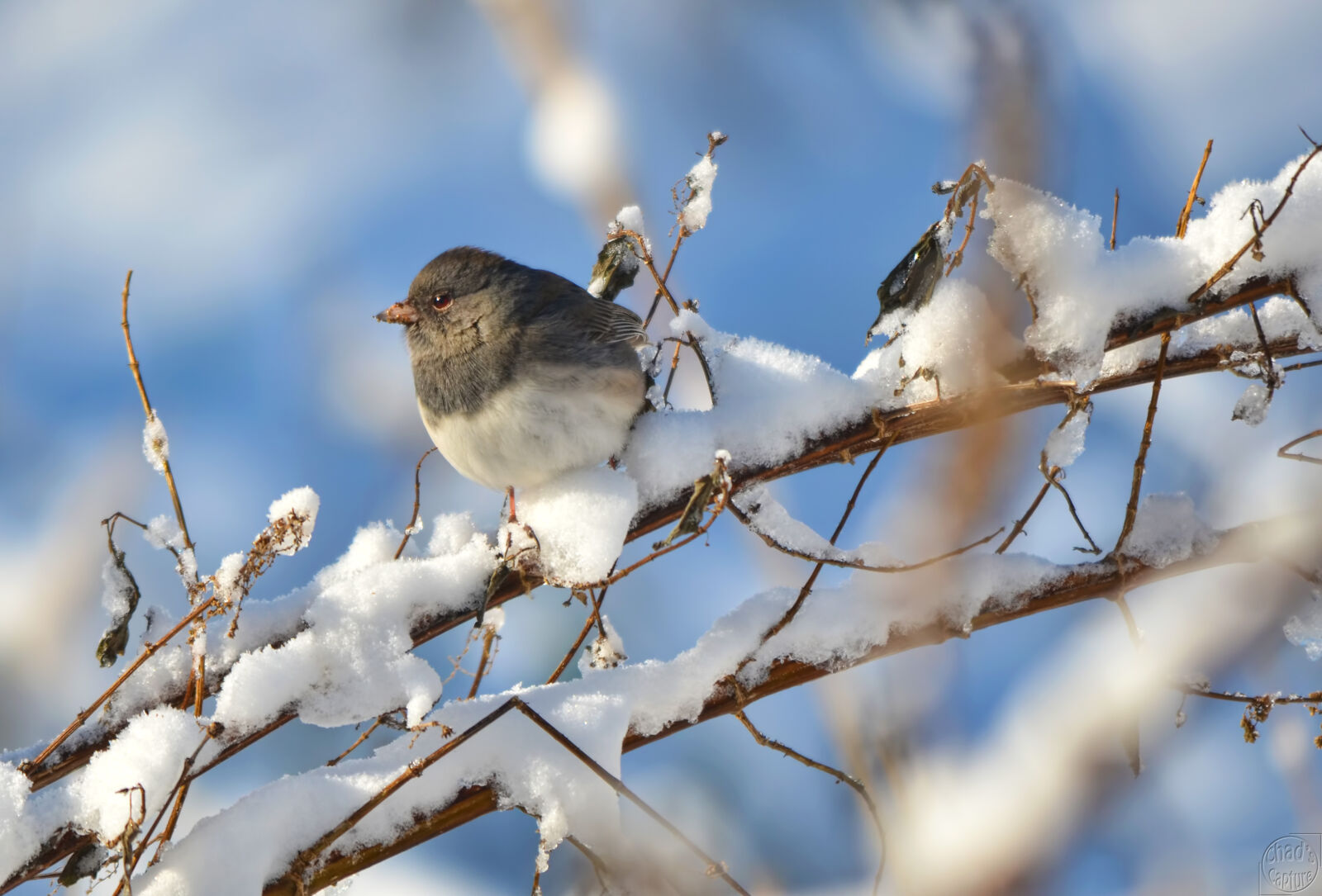
Slate-colored male Dark-eyed Junco. Photo by Chad Horwedel.
Dark-eyed Junco
Winter Range: All lower 48 states except for Florida.
The original “snowbirds”, Dark-eyed Juncos spend the warmer months in the Rocky Mountains and northern forests and show up across the rest of the country as soon as winter sets in. Abundant in forests across North America and easy to recognize by their white tail feathers, looking for Dark-eyed Juncos is a great place to start for first-time winter bird watchers!
Dark-eyed Juncos are birds of the ground, so look for them walking along forest floors or jumping between shrubs in partially wooded areas. They have several regional variations, but the two most common are the “Slate-colored” junco in the east with and the “Oregon” junco in the west sporting a dark hood and warm brown feathers. Both varieties can be identified by their white outer tail feathers which flash open in flight.
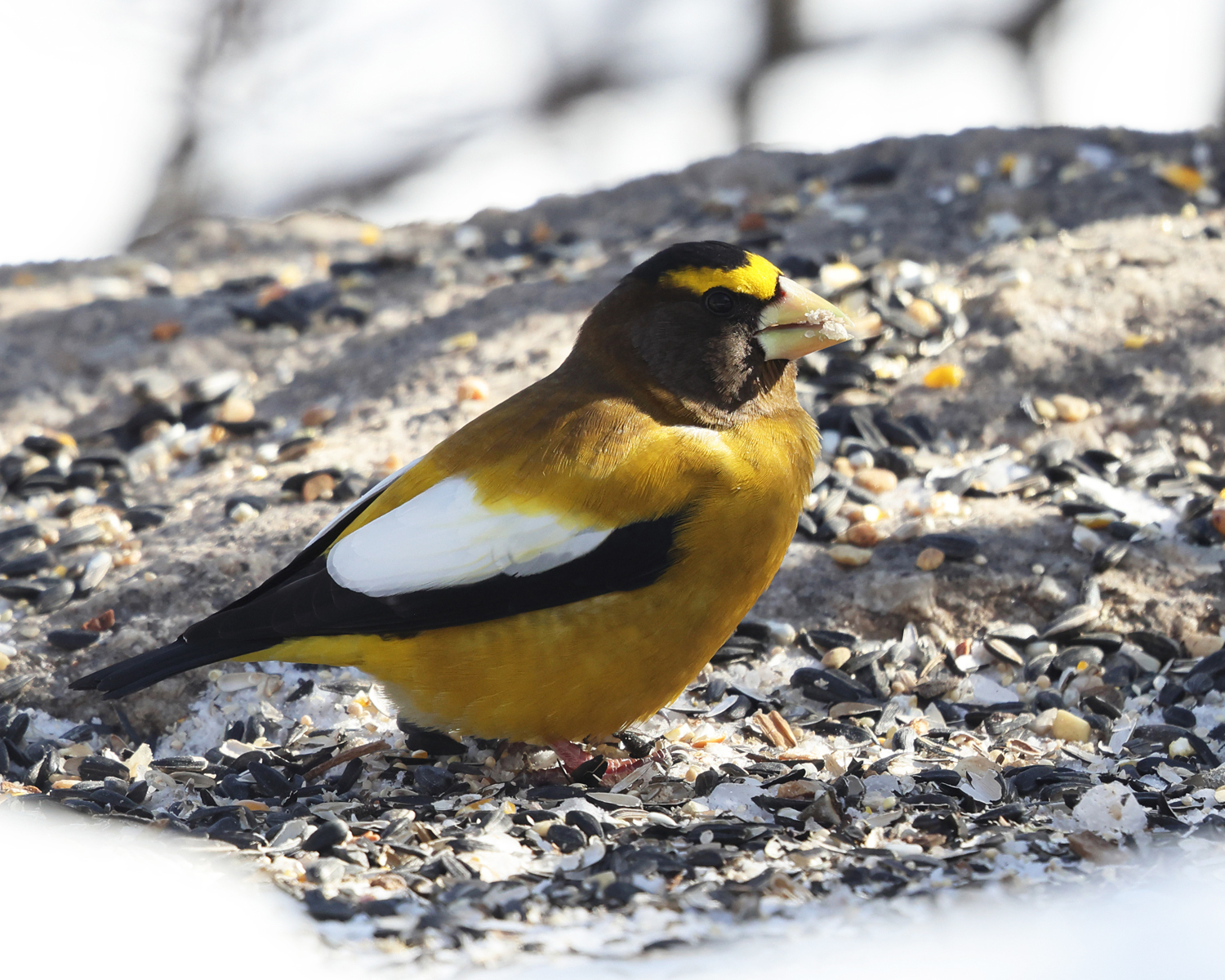
Male Evening Grosbeak. Photo by Tom Murray.
Evening Grosbeak
Winter Range: New England, North Central, and Northwest down to Colorado; occasionally all lower 48 states except for the Southeast.
Year-to-year Evening Grosbeaks can be found wintering in northern coniferous forests and at high elevation in the Rocky Mountains, but these stocky winter finches are also known to wander widely in years seeds are less abundant. These periodic migrations south provide birdwatchers across the country a rare and rewarding chance to see this colorful bird against a winter landscape.
Evening Grosbeak’s can be identified by their stocky build and hefty bill that they use to crack open large seeds. Adult males are black with mustard yellow chests, a bright yellow "eyebrow," and a prominent white patch on their wings. Females are mostly gray, with golden highlights on their neck.
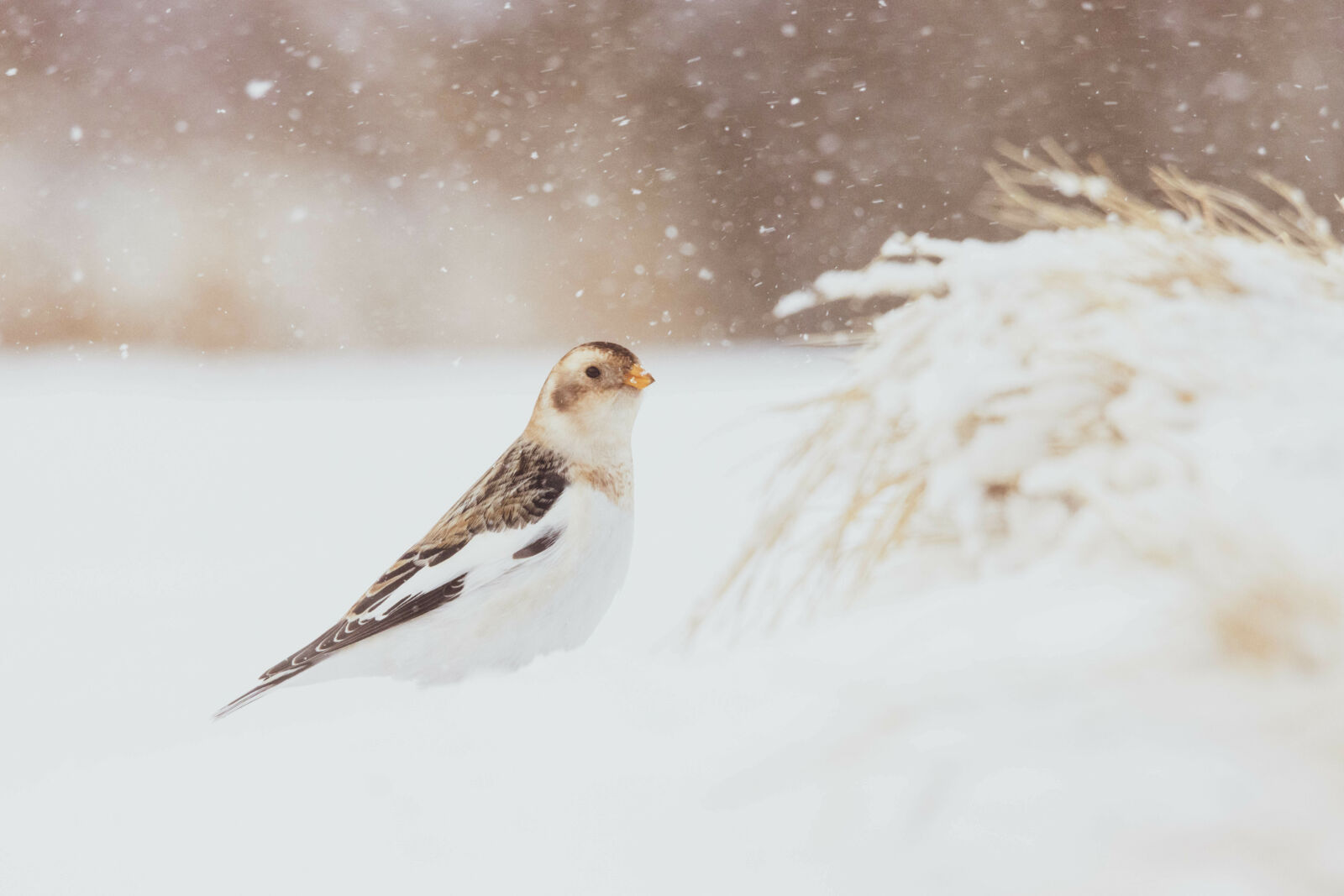
Nonbreeding male Snow Bunting. Photo by James West.
Snow Bunting
Winter Range: New England and North Central; occasionally the northern half of the lower 48 states.
In late fall, flocks of restless Snow Buntings swirl into the upper U.S. from their high Arctic breeding grounds like a blizzard of snowflakes settling in for the winter. Bird enthusiasts can often find flocks of hundreds of Snow Buntings in fields and along lakeshores where debris has piled up around the water’s edge.
At first glance Snow Buntings can be difficult to spot since in the winter their coats gain rusty tones to help them blend in with their new homes, but a flurry of black-and-white will give them away as they take off for a new foraging spot.
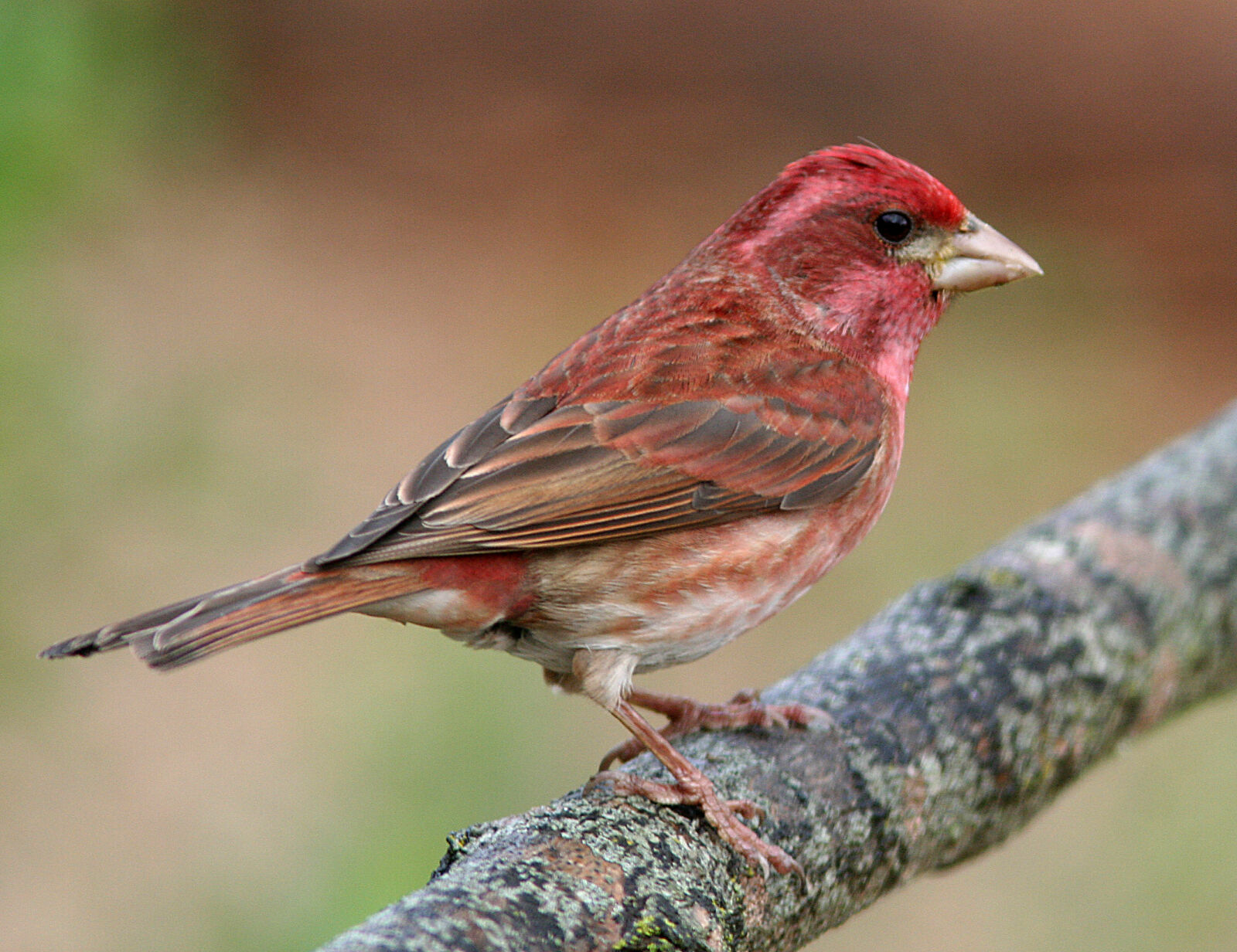
Male Purple Finch. Photo by Alan Schmierer.
Purple Finch
Winter Range: Eastern half of the lower 48 states and the coastal west.
The Purple Finch is another bird bringing color to wintery forest landscapes across the east and coastal west. American naturalist and ornithologist Roger Tory Peterson famously described the Purple Finch as a “sparrow dipped in raspberry juice.” Stocky finches with large bills, adult males are a purple-red, while adult females have coarse, dark brown streaks.
Purple Finches spend most of their time in the highest parts of the forest canopy, but in the winter they will descend into fields to find seeds. Like the Evening Grosbeak, Purple Finches don’t visit all parts of their winter range every year, but when they do visit, their rich colors and sweet warbles are a delightful treat to novice and veteran birdwatchers alike.
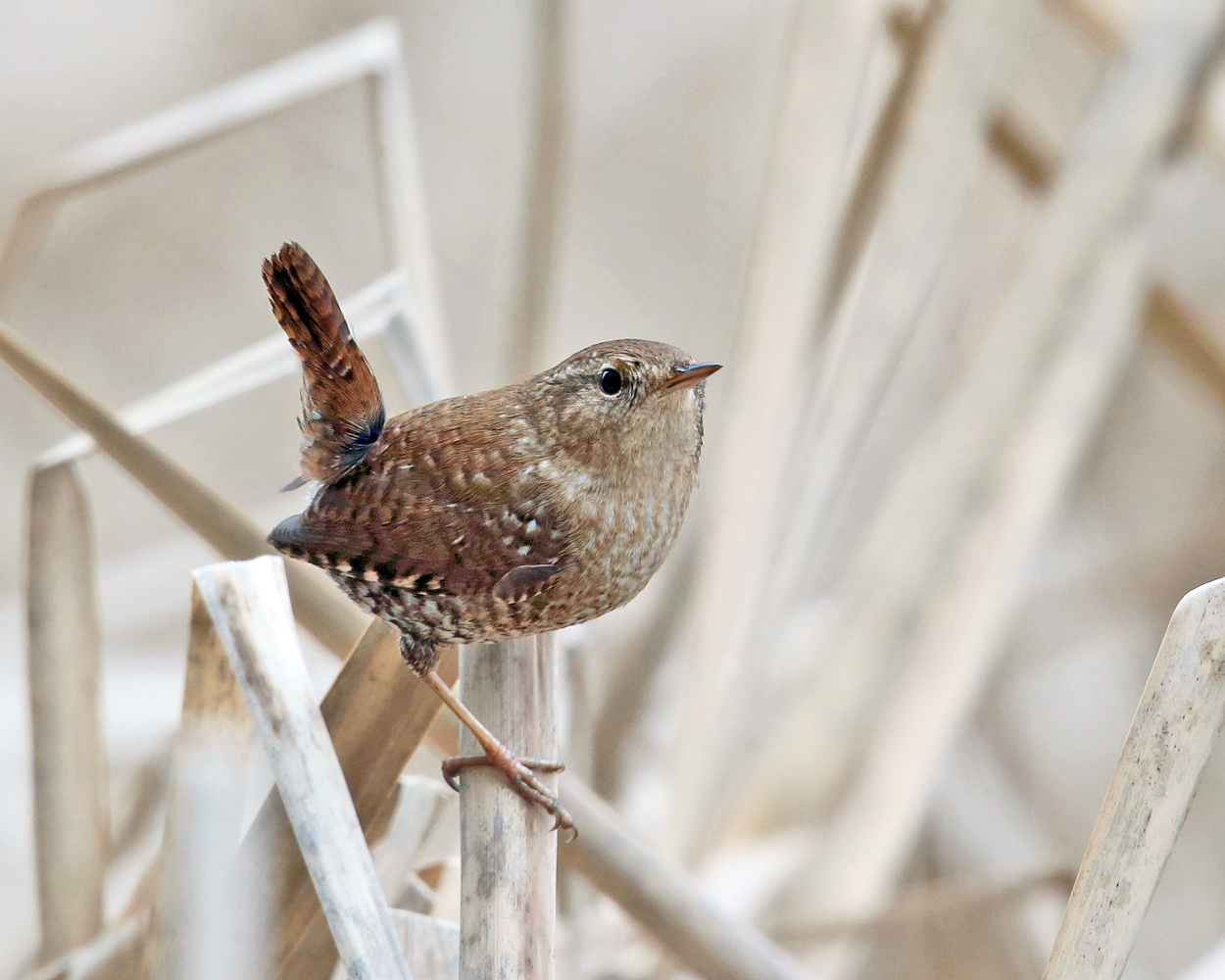
Winter Wren. Photo by Tom Murray.
Winter Wren
Winter Range: Eastern half of the lower 48 states.
The Winter Wren is a tiny bundle of energy, often bobbing its entire body as it scurries through dense vegetation on the forest floor looking for its next snack. In the winter this tiny wren moves from deep evergreen forests in the north to more open woodlands throughout the eastern U.S., making them much easier to spot.
Winter Wrens can be identified by their round, brown bodies and tiny tail that they either hold straight up in the air or bounce up and down. To find a Winter Wren watch for mouselike movements near downed logs or upturned roots on the forest floor. If you cannot find the Winter Wren with your eyes, listen for it with your ears. Per weight, the Winter Wren delivers its song with 10 times more power than a crowing rooster!
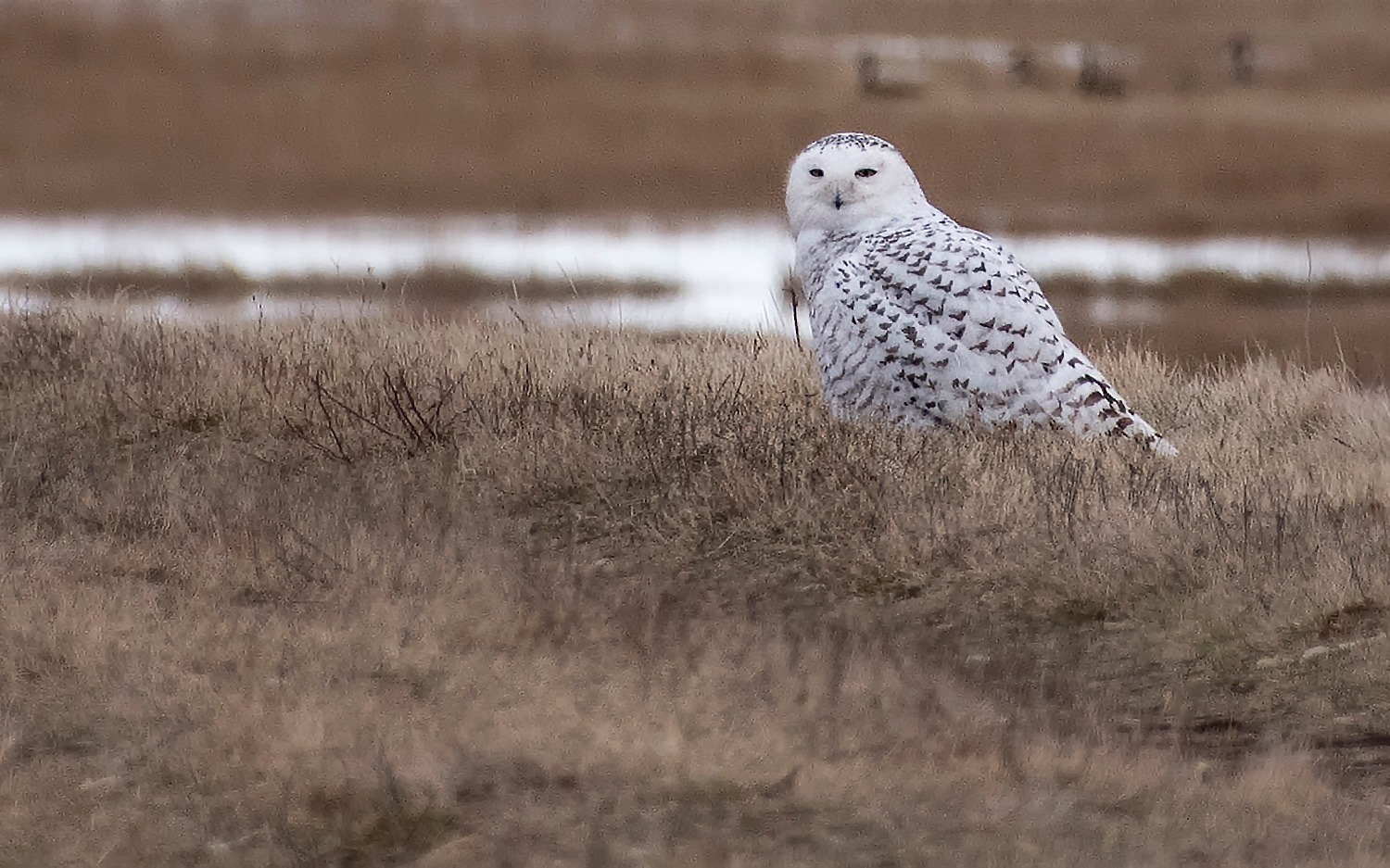
Adult female Snowy Owl. Photo by Matt Poole/USFWS.
Snowy Owl
Winter Range: New England and North Central; occasionally the northern half of the lower 48 states.
One of the most coveted winter bird sightings, Snowy Owls migrate into the northern half of the U.S. roughly every four years. Snowy Owls are the largest North American owl by weight and have an average wingspan of four to five feet, but are perhaps most beloved for their striking snowy white plumage.
Snowy Owls favor open areas like fields, shorelines, and dunes for their winter hunting. Scan open, snowy areas for owls on the ground as well as nearby perches such as fenceposts and telephone poles. Female Snowy Owls have dark bars across their plumage, but male owls are almost completely white, making them difficult to spot against the snow. Be patient and watch carefully and you might catch a glimpse of one of these awe-inspiring birds!
More than 1,000 bird species rely on National Forests and Grasslands.
Unfortunately, many bird species, including the Snowy Owl, are in decline due to habitat loss and degradation. National Forests and Grasslands offer a lifeline, providing sensitive or threatened bird species protected habitat and locations where scientists and the public can better engage and understand them.
While you are out birdwatching on National Forests this winter, consider using eBird to track and share your sightings or join the Great Backyard Bird Count in February to help scientists better understand global bird populations.
Cover photo by I-Ting Chiang.
--------
Bison, bears, bats…you name it, and forests have it. We hope you enjoyed this blog and that you’ll explore the other fascinating wildlife topics here. Just as the wildlife we all cherish depends on healthy habitat, the NFF depends on support from generous, involved individuals like you! Please click here to make a much-needed unrestricted gift today. On behalf of the bison, bears, bats, and countless more creatures, thank you!

